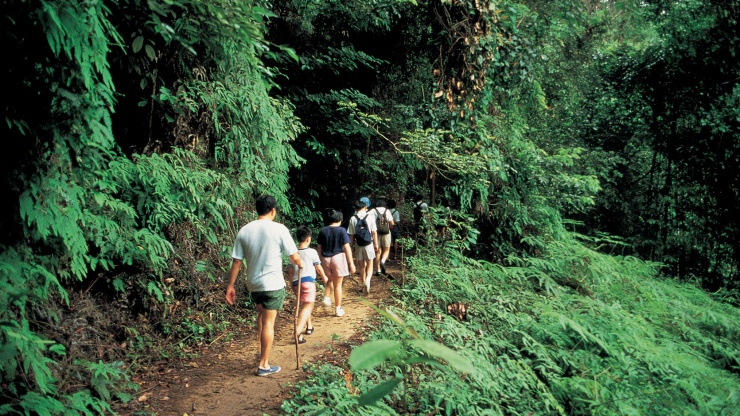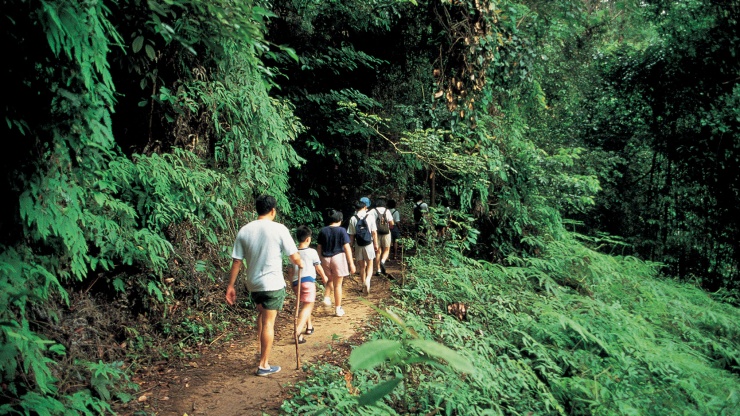More than its eponymous hill and nature reserve, Bukit Timah is an estate steeped in history. It carries an old-world charm that comes from its unique mix of local and colonial heritage, and a a treasure trove of stories waiting to be discovered.
Did you know that the Chun Tin Road was named after Cheong Chun Tin, who was the first certified Chinese practitioner of dentistry in Singapore, and whose descendants later founded the made-in-Singapore Pearlie White brand of toothpaste? The former automobile factory (Former Ford Factory) was the iconic site where the British surrendered Singapore to the Japanese.
Bukit Timah is also home to Singapore’s first UNESCO World Heritage Site – the Singapore Botanic Gardens.
These stories take centre stage in the National Heritage Board’s (NHB) refreshed Bukit Timah Heritage Trail. The trail was first launched in 2007, and its content has been updated. It now encompasses 38 heritage sites, eight of which feature newly-installed trail markers.
The new sites were incorporated into the refreshed trail as new information was uncovered through oral interviews and new research materials gathered from archival newspapers, maps and other resources from government agencies.
Community contributions also feature prominently in the refreshed Bukit Timah Heritage Trail. NHB interviewed members of the public who lived and worked in Bukit Timah to document their memories, anecdotes and experiences.
One of the key insights uncovered is the presence of kampongs and various local communities in the Bukit Timah area since the 1900s. One examplie is Kampong Tempe (formerly located at present day Sixth Avenue), named after the fermented soybean cake known as tempe as a number of families there produced the delicacy.
Cross-cultural connections were also strong in these kampongs. Different religious communities and buildings, such as the Masjid Al-Huda and Hoon San Temple, existed in close proximity.
“Through the refreshed Bukit Timah Heritage Trail, we hope to present a more complete and updated story of Bukit Timah’s heritage, including how it used to house numerous kampongs, and how it contributed to Singapore’s industrial growth as one of the country’s industrial hubs during the 1950s with factories manufacturing a variety of industrial and consumer goods," said Mr Alvin Tan, Assistant Chief Executive (Policy & Community) of NHB.
“We hope that the Bukit Timah Heritage Trail will showcase the area’s rich and diverse heritage, foster a greater sense of pride and belonging amongst residents, and provoke a sense of curiosity amongst Singaporeans and entice them to visit and look at the estate through fresh eyes.”
To enhance the accessibility of the refreshed Bukit Timah Heritage Trail for trail-goers, NHB has created three easy-to-follow, bite-sized thematic routes covering different segments along Bukit Timah Road.
These trails allow visitors to easily explore in their own time the buildings, structures, religious institutions and sites of natural heritage that make up Bukit Timah’s multi-faceted history.
They are:
1. “Kampong Life Trail” (1 hour: bus and walk): This trail features buildings and institutions that were once part of Bukit Timah’s kampong past, including a former railway station as well as houses of faith for communities that used to live there.
2. “WWII Legacy Trail” (1.5 hours; bus and walk): This trail explores WWII-related sites as well as places that carry the memories and legacies of the Japanese Occupation.
3. “Leisure and Learning Trail” (2 hours; on foot): This trail covers some of the social and leisure landmarks well-loved by residents and Singaporeans, including popular eating destinations, Botanic Gardens, as well as vital centres of research and education.




